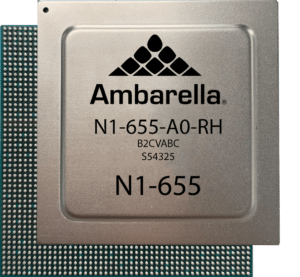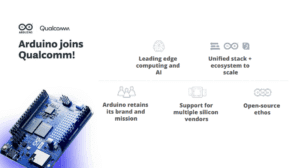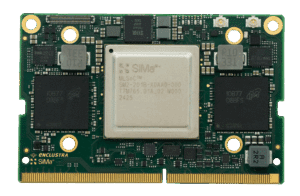Processors for Embedded Vision
THIS TECHNOLOGY CATEGORY INCLUDES ANY DEVICE THAT EXECUTES VISION ALGORITHMS OR VISION SYSTEM CONTROL SOFTWARE
This technology category includes any device that executes vision algorithms or vision system control software. The following diagram shows a typical computer vision pipeline; processors are often optimized for the compute-intensive portions of the software workload.

The following examples represent distinctly different types of processor architectures for embedded vision, and each has advantages and trade-offs that depend on the workload. For this reason, many devices combine multiple processor types into a heterogeneous computing environment, often integrated into a single semiconductor component. In addition, a processor can be accelerated by dedicated hardware that improves performance on computer vision algorithms.
General-purpose CPUs
While computer vision algorithms can run on most general-purpose CPUs, desktop processors may not meet the design constraints of some systems. However, x86 processors and system boards can leverage the PC infrastructure for low-cost hardware and broadly-supported software development tools. Several Alliance Member companies also offer devices that integrate a RISC CPU core. A general-purpose CPU is best suited for heuristics, complex decision-making, network access, user interface, storage management, and overall control. A general purpose CPU may be paired with a vision-specialized device for better performance on pixel-level processing.
Graphics Processing Units
High-performance GPUs deliver massive amounts of parallel computing potential, and graphics processors can be used to accelerate the portions of the computer vision pipeline that perform parallel processing on pixel data. While General Purpose GPUs (GPGPUs) have primarily been used for high-performance computing (HPC), even mobile graphics processors and integrated graphics cores are gaining GPGPU capability—meeting the power constraints for a wider range of vision applications. In designs that require 3D processing in addition to embedded vision, a GPU will already be part of the system and can be used to assist a general-purpose CPU with many computer vision algorithms. Many examples exist of x86-based embedded systems with discrete GPGPUs.
Digital Signal Processors
DSPs are very efficient for processing streaming data, since the bus and memory architecture are optimized to process high-speed data as it traverses the system. This architecture makes DSPs an excellent solution for processing image pixel data as it streams from a sensor source. Many DSPs for vision have been enhanced with coprocessors that are optimized for processing video inputs and accelerating computer vision algorithms. The specialized nature of DSPs makes these devices inefficient for processing general-purpose software workloads, so DSPs are usually paired with a RISC processor to create a heterogeneous computing environment that offers the best of both worlds.
Field Programmable Gate Arrays (FPGAs)
Instead of incurring the high cost and long lead-times for a custom ASIC to accelerate computer vision systems, designers can implement an FPGA to offer a reprogrammable solution for hardware acceleration. With millions of programmable gates, hundreds of I/O pins, and compute performance in the trillions of multiply-accumulates/sec (tera-MACs), high-end FPGAs offer the potential for highest performance in a vision system. Unlike a CPU, which has to time-slice or multi-thread tasks as they compete for compute resources, an FPGA has the advantage of being able to simultaneously accelerate multiple portions of a computer vision pipeline. Since the parallel nature of FPGAs offers so much advantage for accelerating computer vision, many of the algorithms are available as optimized libraries from semiconductor vendors. These computer vision libraries also include preconfigured interface blocks for connecting to other vision devices, such as IP cameras.
Vision-Specific Processors and Cores
Application-specific standard products (ASSPs) are specialized, highly integrated chips tailored for specific applications or application sets. ASSPs may incorporate a CPU, or use a separate CPU chip. By virtue of their specialization, ASSPs for vision processing typically deliver superior cost- and energy-efficiency compared with other types of processing solutions. Among other techniques, ASSPs deliver this efficiency through the use of specialized coprocessors and accelerators. And, because ASSPs are by definition focused on a specific application, they are usually provided with extensive associated software. This same specialization, however, means that an ASSP designed for vision is typically not suitable for other applications. ASSPs’ unique architectures can also make programming them more difficult than with other kinds of processors; some ASSPs are not user-programmable.

Breaking Free from the CUDA Lock-in
This blog post was originally published at SiMa.ai’s website. It is reprinted here with the permission of SiMa.ai. The AI hardware landscape is dominated by one uncomfortable truth: most teams feel trapped by CUDA. You trained your models on NVIDIA GPUs, deployed them with TensorRT, and now the thought of switching hardware feels like rewriting

Upcoming Seminar Explores the Latest Innovations in Mobile Robotics
On October 22, 2022 at 9:00 am PT, Alliance Member company NXP Semiconductors, along with Avnet, will deliver a free (advance registration required) half-day in-person robotics seminar at NXP’s office in San Jose, California. From the event page: Join us for a free in-depth seminar exploring the latest innovations in mobile robotics with a focus

Free Webinar Explores Edge AI-enabled Microcontroller Capabilities and Trends
On November 18, 2025 at 9 am PT (noon ET), the Yole Group’s Tom Hackenberg, principal analyst for computing, will present the free hour webinar “How AI-enabled Microcontrollers Are Expanding Edge AI Opportunities,” organized by the Edge AI and Vision Alliance. Here’s the description, from the event registration page: Running AI inference at the edge,

Ambarella Redefines Edge AI Performance with Cadence
This blog post was originally published at Cadence’s website. It is reprinted here with the permission of Cadence. Ambarella stands at the forefront of edge AI processing, pioneering low-power, high-performance systems on chip (SoCs) that power a new generation of smart devices. Ambarella’s mission is to enable intelligence at the edge, from automotive systems that

“Lessons Learned Building and Deploying a Weed-killing Robot,” a Presentation from Tensorfield Agriculture
Xiong Chang, CEO and Co-founder of Tensorfield Agriculture, presents the “Lessons Learned Building and Deploying a Weed-Killing Robot” tutorial at the May 2025 Embedded Vision Summit. Agriculture today faces chronic labor shortages and growing challenges around herbicide resistance, as well as consumer backlash to chemical inputs. Smarter, more sustainable approaches… “Lessons Learned Building and Deploying

Artificial Intelligence (AI) As the Semiconductor Growth Engine: AI White Paper Volume 1 – Memory & Computing
This market research report was originally published at the Yole Group’s website. It is reprinted here with the permission of the Yole Group. Yole Group Launches its First AI White Paper. KEY TAKEAWAYS Compute at the limit: Training and inference workloads now demand gigawatts of electricity, raising urgent questions on sustainability, cost, and infrastructure capacity.

Using the Qualcomm AI Inference Suite from Google Colab
This blog post was originally published at Qualcomm’s website. It is reprinted here with the permission of Qualcomm. Building off of the blog post here, which shows how easy it is to call the Cirrascale AI Inference Cloud using the Qualcomm AI Inference Suite, we’ll use Google Colab to show the same scenario. In the previous blog

Qualcomm to Acquire Arduino—Accelerating Developers’ Access to its Leading Edge Computing and AI
New Arduino UNO Q and Arduino App Lab to Enable Millions of Developers with the Power of Qualcomm Dragonwing Processors Highlights: Acquisition to combine Qualcomm’s leading-edge products and technologies with Arduino’s vast ecosystem and community to empower businesses, students, entrepreneurs, tech professionals, educators and enthusiasts to quickly and easily bring ideas to life. New Arduino

Deploy High-performance AI Models in Windows Applications on NVIDIA RTX AI PCs
This blog post was originally published at NVIDIA’s website. It is reprinted here with the permission of NVIDIA. Microsoft is now making Windows ML available to developers. Windows ML enables C#, C++ and Python developers to optimally run AI models locally across PC hardware from CPU, NPU and GPUs. On NVIDIA RTX GPUs, it utilizes

Andes Technology Expands Comprehensive AndeSentry Security Suite with Complete Trusted Execution Environment Support for Embedded Systems
Includes IOPMP, Secure Boot, MCU-TEE for RTOS, and OP-TEE for Linux to Protect Devices from MCUs to Edge AI Processors Hsinchu, Taiwan – October 6th, 2025 – Andes Technology Corporation, the leading supplier of high-efficiency, low-power 32/64-bit RISC-V processor cores, today announced the latest AndeSentry™ Framework with two new components, Secure Boot v1.0.1 and MCU-TEE

SiMa.ai and Enclustra: Redefining Solutions for Physical AI
This blog post was originally published at SiMa.ai’s website. It is reprinted here with the permission of SiMa.ai. At SiMa.ai and Enclustra, we don’t build products to follow trends – we engineer platforms that redefine them. Our collaboration is a prime example. By combining SiMa’s groundbreaking MLSoC™ Modalix with Enclustra’s proven SoM design expertise, we

Generative AI Reshapes the Global Processor Market, Driving Unprecedented Growth
This market research report was originally published at the Yole Group’s website. It is reprinted here with the permission of the Yole Group. Semiconductor Tour on 10/8 at 11:00 AM, in parallel to Semicon West- Invited speakers: NVIDIA, Intel, Lam Research. Register today! KEY TAKEAWAYS The processor market is projected to reach $554 billion by

Using the Qualcomm AI Inference Suite Directly from a Web Page
This blog post was originally published at Qualcomm’s website. It is reprinted here with the permission of Qualcomm. Applying the Qualcomm AI Inference Suite directly from a web page using JavaScript makes it easy to create and understand how AI inference works in in web solutions. Qualcomm Technologies in collaboration with Cirrascale has a free-to-try

Edge AI Hangs on Power: Can Chipmakers Meet Up?
Power semiconductors will define how well and how quickly the global economy adopts Edge AI and benefit from its promises. That’s why the race is stiffening among chipmakers to offer the most innovative power management components and systems. Who is winning? What’s at stake: The stakes for power semiconductor makers in the Edge AI market

“Sensors and Compute Needs and Challenges for Humanoid Robots,” a Presentation from Agility Robotics
Vlad Branzoi, Perception Sensors Team Lead at Agility Robotics, presents the “Sensors and Compute Needs and Challenges for Humanoid Robots” tutorial at the September 2025 Edge AI and Vision Innovation Forum.

How to Integrate Computer Vision Pipelines with Generative AI and Reasoning
This blog post was originally published at NVIDIA’s website. It is reprinted here with the permission of NVIDIA. Generative AI is opening new possibilities for analyzing existing video streams. Video analytics are evolving from counting objects to turning raw video content footage into real-time understanding. This enables more actionable insights. The NVIDIA AI Blueprint for

Thermal Interface Materials: The Critical Heat-Transfer Frontier in Advanced Semiconductor Packaging
The next generation of Thermal Interface Materials (TIMs) offer the opportunity to gain a quantum leap in thermal efficiency, reliability, and market growth. IDTechEx research finds the market size of next-generation TIM1 and TIM1.5 for advanced semiconductor packaging will exceed at a CAGR of 31% from 2026 to 2036. In this new article, IDTechEx Senior Technology
IDTechEx Technology Innovations Outlook 2026-2036
This collection of in-depth articles from IDTechEx industry experts examines some of the most important technology innovation trends set to transform global industries over the next decade. It provides both a clear assessment of today’s landscape and a forward-looking outlook through to 2036, helping businesses, investors, and policymakers prepare for opportunities and challenges ahead. This

Introducing Modalix SoM: Power Efficient SoM with Rich Peripherals for Seamless Sensor Integration
This blog post was originally published at SiMa.ai’s website. It is reprinted here with the permission of SiMa.ai. At SiMa.ai, we’re pushing the boundaries of what’s possible with Physical AI. Today, we’re proud to announce the sampling of our new System-on-Module (SoM), featuring the second-generation Modalix™ MLSoC. Designed to bring cutting-edge GenAI and LLM capabilities

The Edge’s Essential Role in the Future of AI
This blog post was originally published at Qualcomm’s website. It is reprinted here with the permission of Qualcomm. What you should know: The future of AI will be hybrid, with the cloud and the edge working together — each playing a vital role. The user interface (UI) is now human-centric — your device understands your

